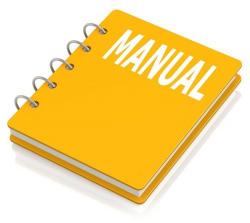Hyundai Equus 2009-2016 Workshop Repair & Service Manual
Catalog:
Model:
Complete digital official shop manual contains service, maintenance, and troubleshooting information for the Hyundai Equus 2009-2016. Diagnostic and repair procedures are covered in great detail to repair, maintain, rebuild, refurbish or restore your vehicle like a professional mechanic in local service/repair workshop. This cost-effective quality manual is 100% complete and intact as should be without any missing pages. It is the same factory shop manual used by dealers that guaranteed to be fully functional to save your precious time.
This manual for Hyundai Equus 2009-2016 is divided into different sections. Each section covers a specific component or system and, in addition to the standard service procedures, includes disassembling, inspecting, and assembling instructions. A table of contents is placed at the beginning of each section. Pages are easily found by category, and each page is expandable for great detail. It is in the cross-platform PDF document format so that it works like a charm on all kinds of devices. You do not need to be skilled with a computer to use the manual.
EXCERPT:
2012-13 ENGINE Cylinder Head Assembly - 5.0L GDI - Equus
CYLINDER HEAD
COMPONENTS AND COMPONENTS LOCATION
Components
[RH]
Fig. 1: Identifying Cylinder Head Assembly Components With Torque Specifications (RH)
[LH]
Fig. 2: Identifying Cylinder Head Assembly Components With Torque Specifications (LH)
REPAIR PROCEDURES
Removal
NOTE: Mark all wiring and hoses to avoid misconnection. Turn the crankshaft pulley so that the No. 1 piston is at top dead center.
1. Disconnect the negative terminal (A) from the battery.
Fig. 3: Identifying Battery Negative Terminal
2. Remove the engine room cover (A), engine cover (B) and radiator grill upper cover (C).
Fig. 4: Identifying Engine Room Covers, Engine Cover And Radiator Grill Upper Cover
3. Loosen the drain plug (A) and drain the engine coolant. Remove the radiator cap to speed draining.
WARNING: Never remove the radiator cap when the engine is hot. Serious scalding could be caused by hot fluid under high pressure escaping from the radiator.
Fig. 5: Identifying Drain Plug
4. Remove the air cleaner assembly.
1. Remove the air duct (A).
2. Disconnect the breather hose (B).
3. Loosen the clamp (C) and then disconnect the air intake hose from the throttle body.
Tightening torque: 2.9 ~ 4.9N.m (0.3 ~ 0.5kgf.m, 2.2 ~ 3.6lb-ft)
4. Remove the chamber air cleaner (D) and air cleaner assembly (E). Tightening torqu Air cleaner assembly bolts: 7.8 ~ 9.8N.m (0.8 ~ 1.0kgf.m, 5.8 ~ 7.2lb-ft)
Fig. 6: Identifying Air Duct, Breather Hose, Clamp, Chamber Air Cleaner And Air Cleaner Assembly
5. Disconnect the radiator upper hose (A) and lower hose (B).
Fig. 7: Identifying Radiator Upper And Lower Hose
6. Remove the fuel hose (A), the purge control solenoid valve (PCSV) hose (B) and the brake booster vacuum hose (C).
...





